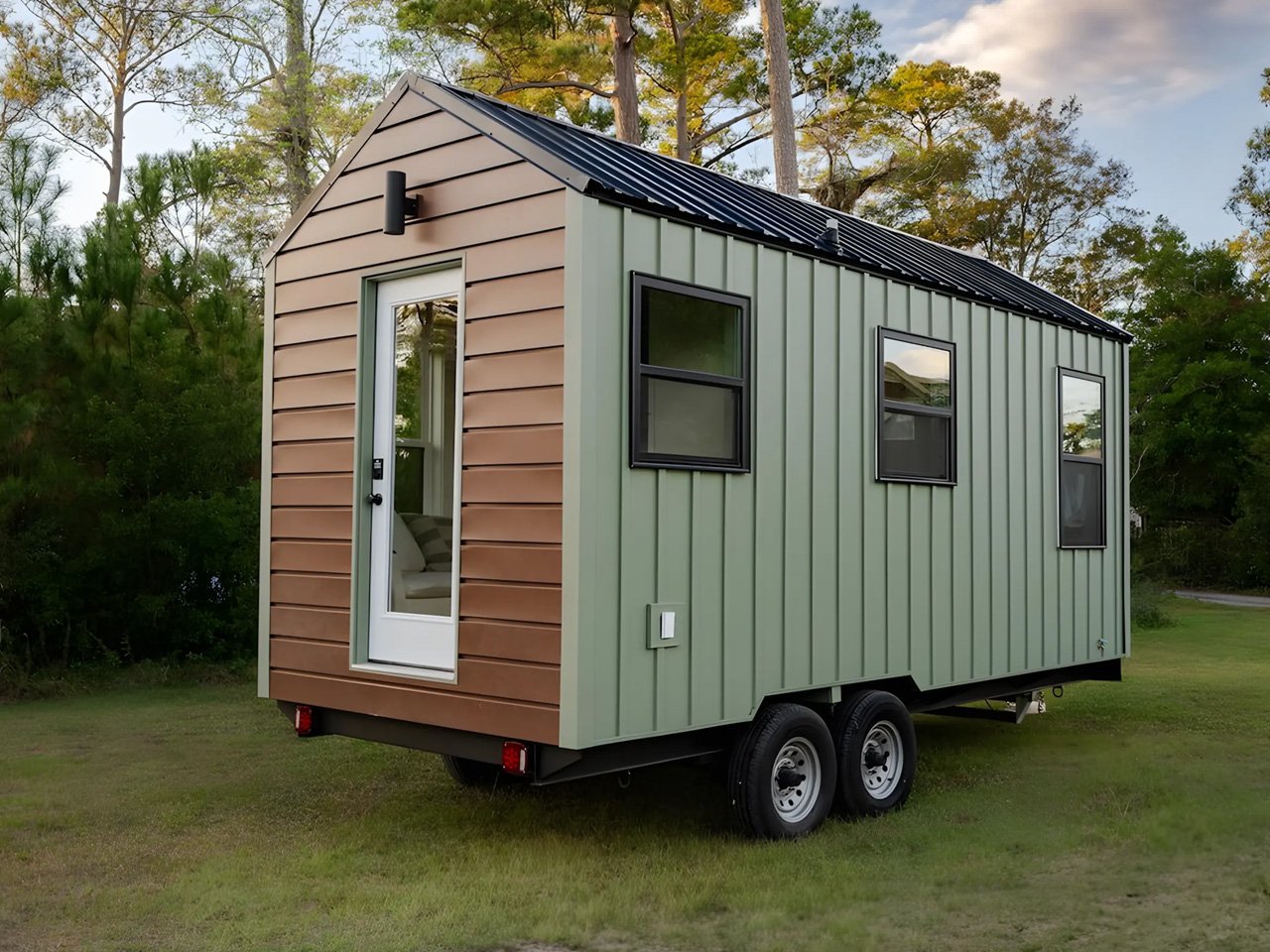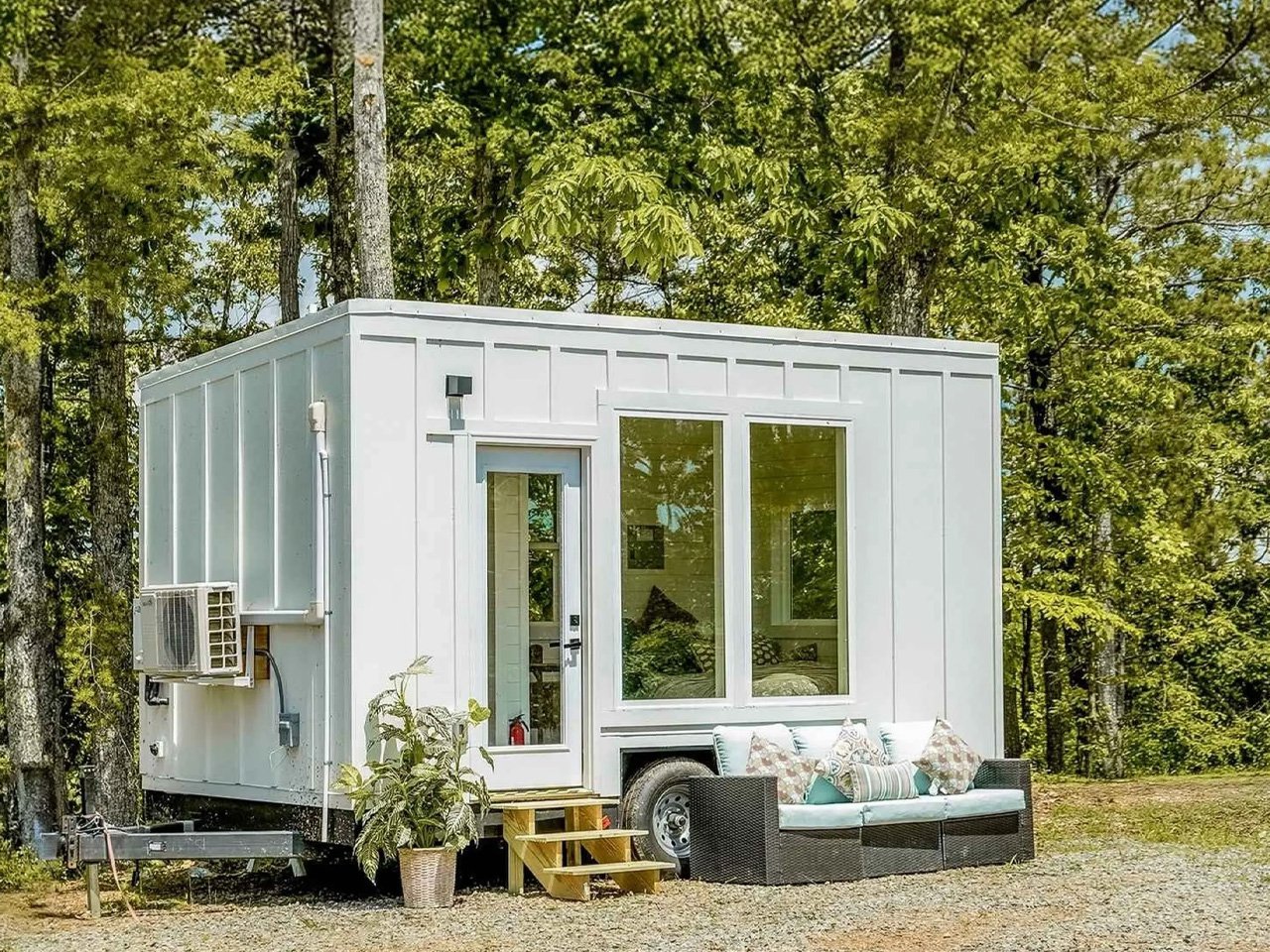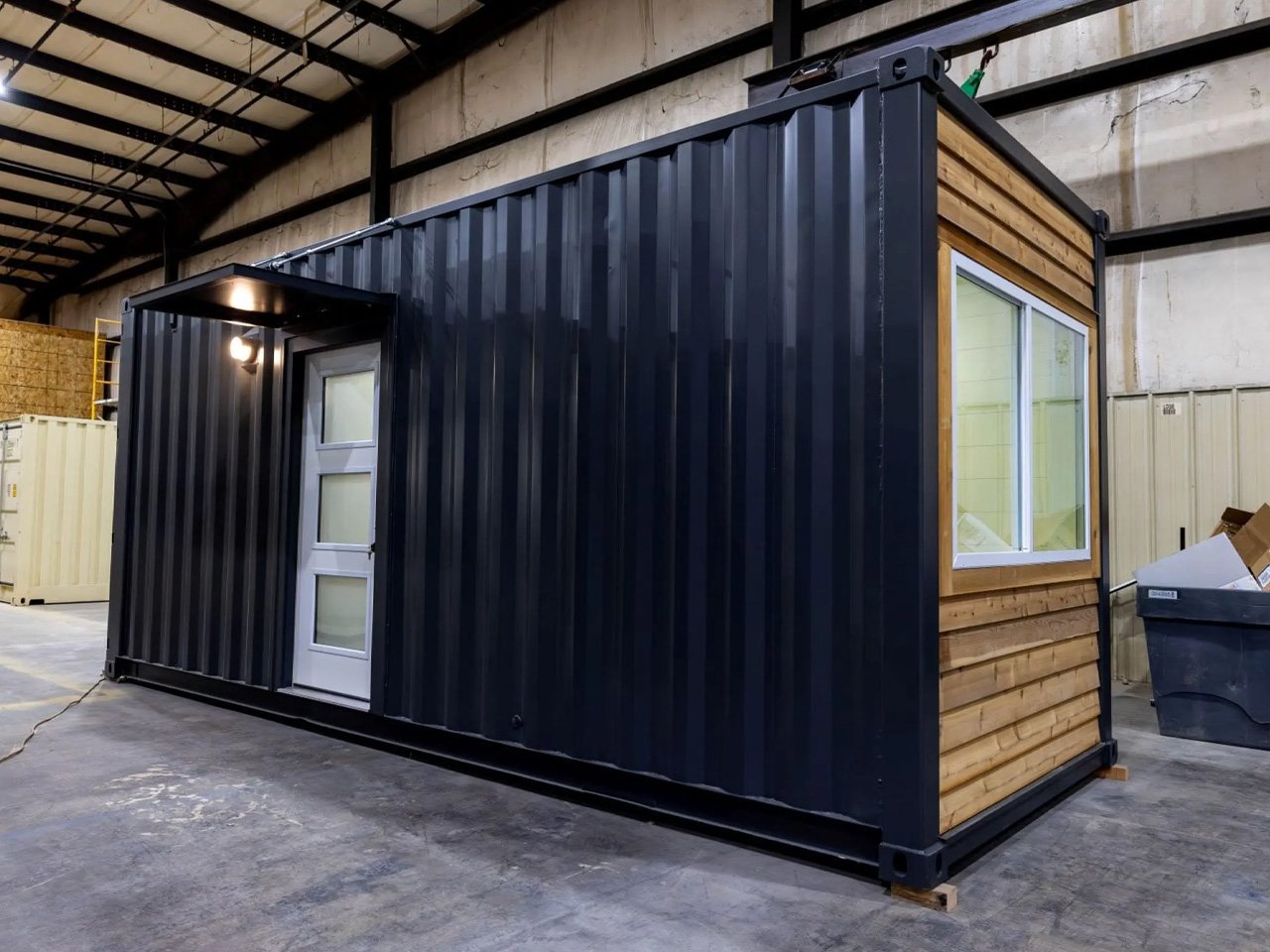

Spending $2,000 a month on rent means throwing away $24,000 a year with nothing to show for it. This is currently the reality in most major US cities. But here's the thing: You could own an entire tiny home for less than two years of rent payments. And we're not talking about tight, uncomfortable boxes here. Modern tiny houses are thoughtfully designed spaces in which every square centimeter counts. The tiny home movement has come of age.
What once felt like an extreme experiment is now a legitimate housing solution for remote workers, first-time buyers, and anyone tired of watching their paycheck disappear into rent. The homes we look at range from $23,500 to $45,000. Most just need a standard RV hookup for utilities. They're towable, mortgage-free, and prove that living small doesn't mean living impoverished. These seven tiny houses offer complete living amenities on 135 to 160 square meters. Whether you want a permanent residence, a backyard guesthouse, or an Airbnb rental, these options are redefining what affordable housing looks like.
1. The Nook by Custom Container Living – $45,000 (est.)
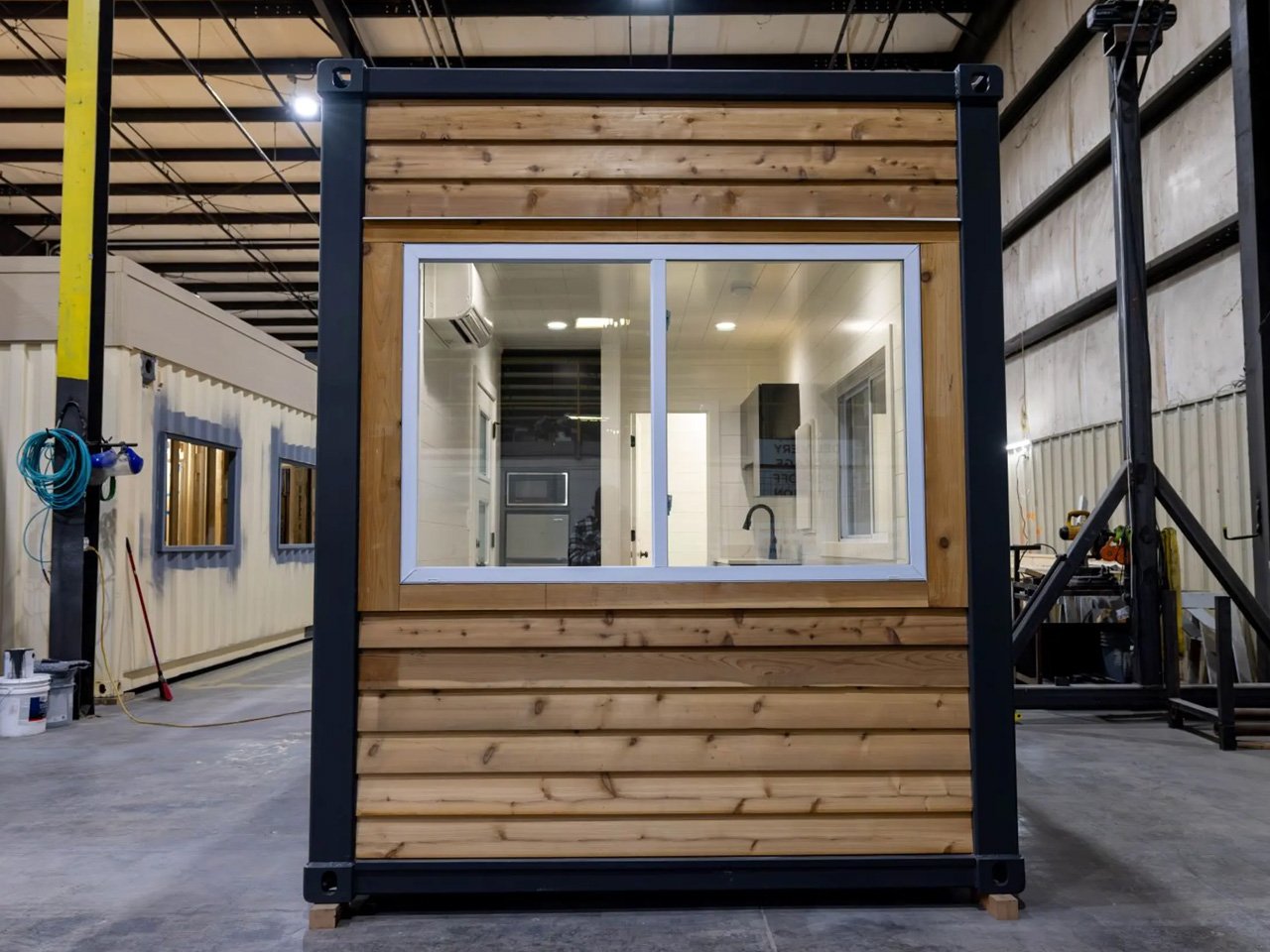

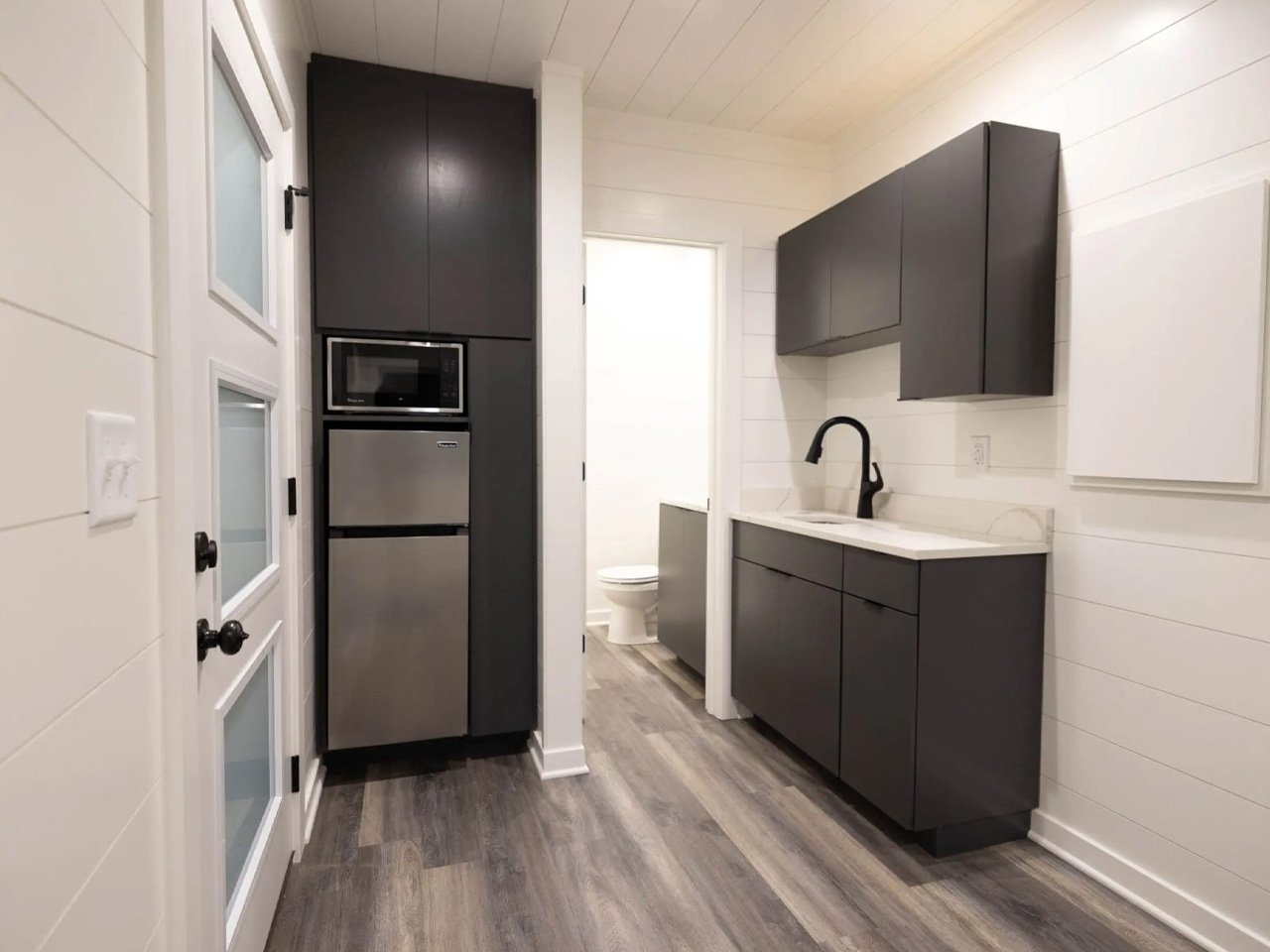

Custom Container Living transformed a 20-foot container into something surprisingly livable. The Nook spans 160 square meters with a black exterior and cedar wood accents that warm up the industrial vibe. Large windows bring in natural light and make the metal container seem less like a box. Closed cell foam insulation keeps you comfortable whether it's freezing cold or scorching hot outside.
Everything is on one level, making it easy to move around. The front door leads directly into a well-equipped kitchen with sink, full cupboards, fridge/freezer and microwave. There is also storage space for a few additional devices. The bathroom is hidden behind a sliding door and has a shower, sink and flush toilet. The Nook works because it doesn't try to be more than it is. It's a simple, functional space that feels intentional.
What we like
- Professional insulation means year-round comfort in any climate.
- Cedar accents make it look more like a home than a shipping container.
What we don't like
- No attic means that sleeping and living areas cannot be separated.
- 160 square meters leave little room for personal touches or expansions.
2. The Fairfax by Dragon Tiny Homes – $35,000 (estimated)
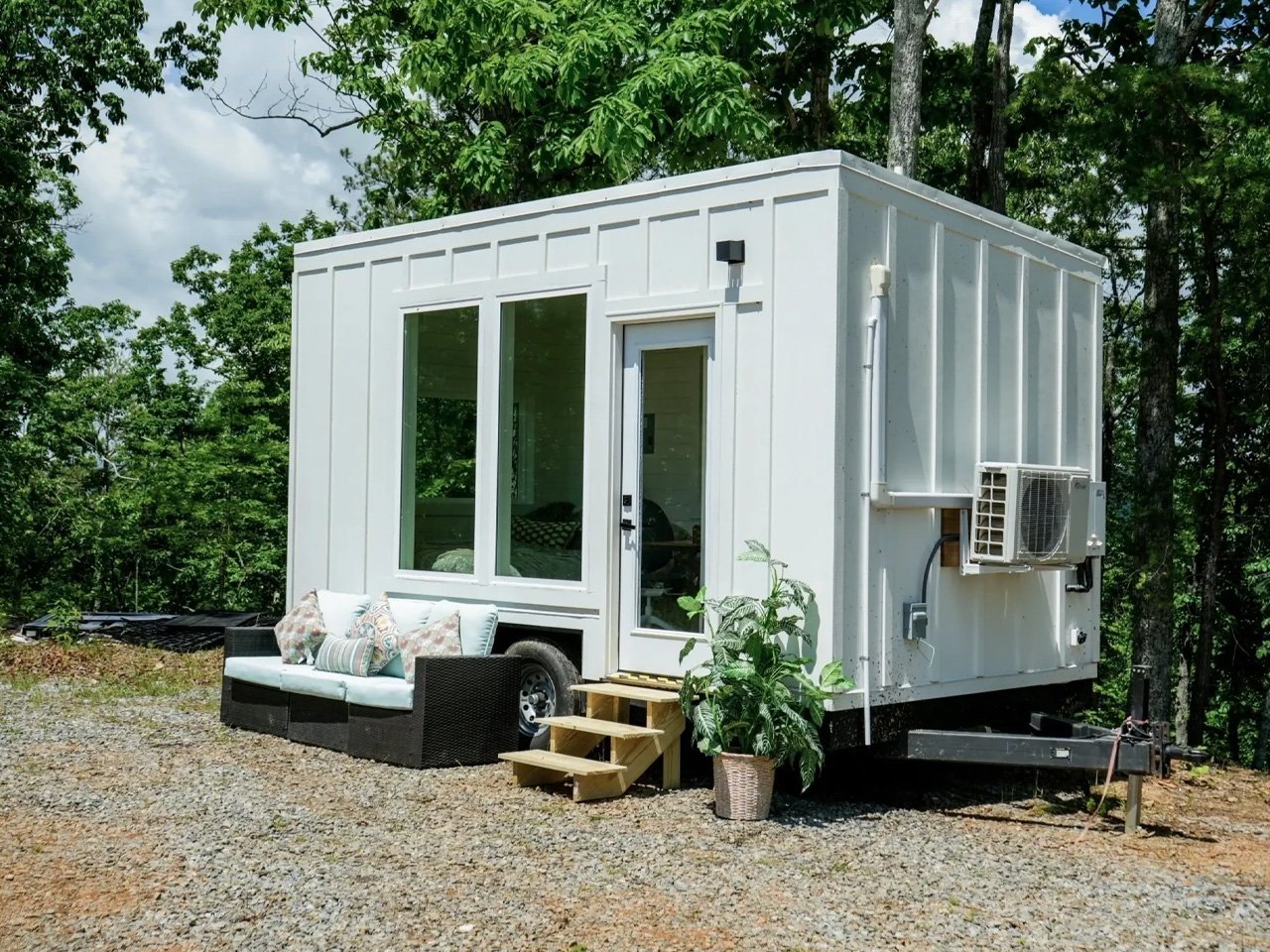

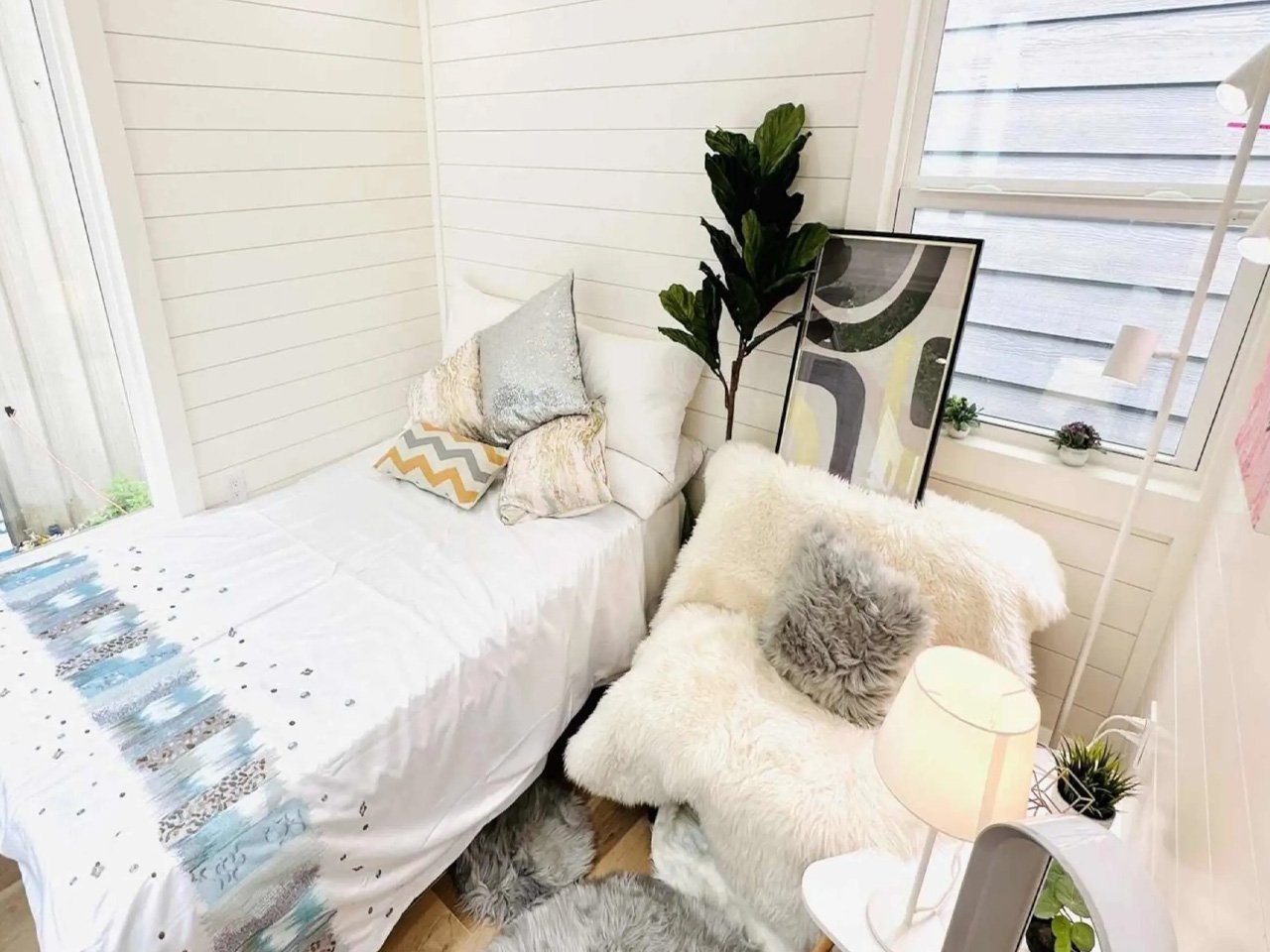

The Fairfax is what Dragon Tiny Homes calls “a hotel room on wheels,” and that’s pretty accurate. At 16 feet long and 135 square feet, this is not intended for family living. It is built on a two-axle trailer with a steel frame and concrete slab cladding. Inside, step walls create a cozy atmosphere despite the compact size.
Thanks to the single-story layout, everything is accessible without having to climb attic ladders. It is ideal as a vacation spot, guest house, home office or Airbnb rental. The small size is actually a strength when you need something mobile and easy to transport. The Fairfax does not purport to be a full-time family home. It's a special space that does a job really well.
What we like
- Budget-friendly entry into tiny home ownership.
- Its 16-foot length makes it super easy to tow and move.
What we don't like
- Too cramped for comfortable full-time living.
- Less features than larger models at similar prices.
3. The 4800L Compact from Tiny Build – $31,000
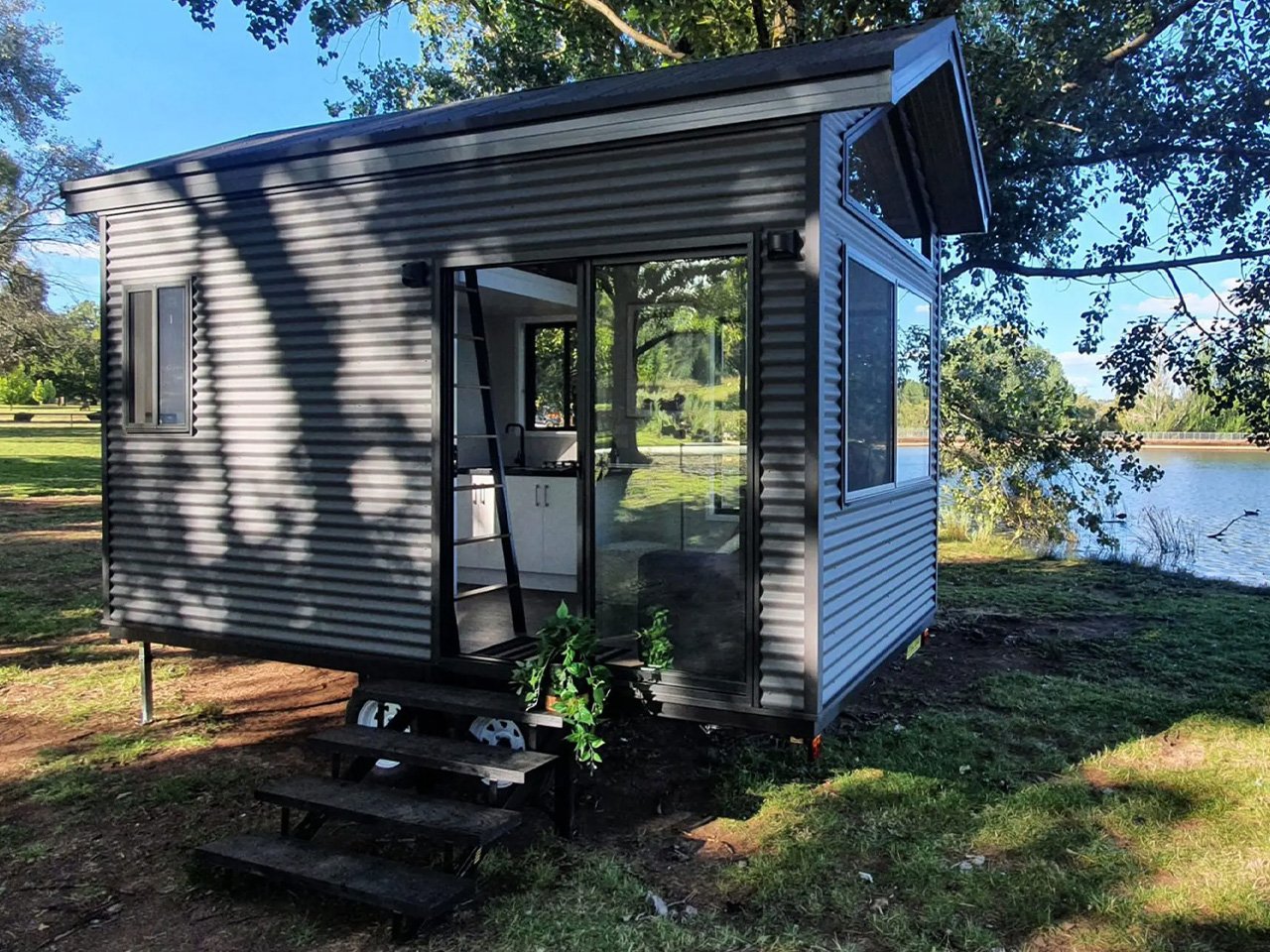

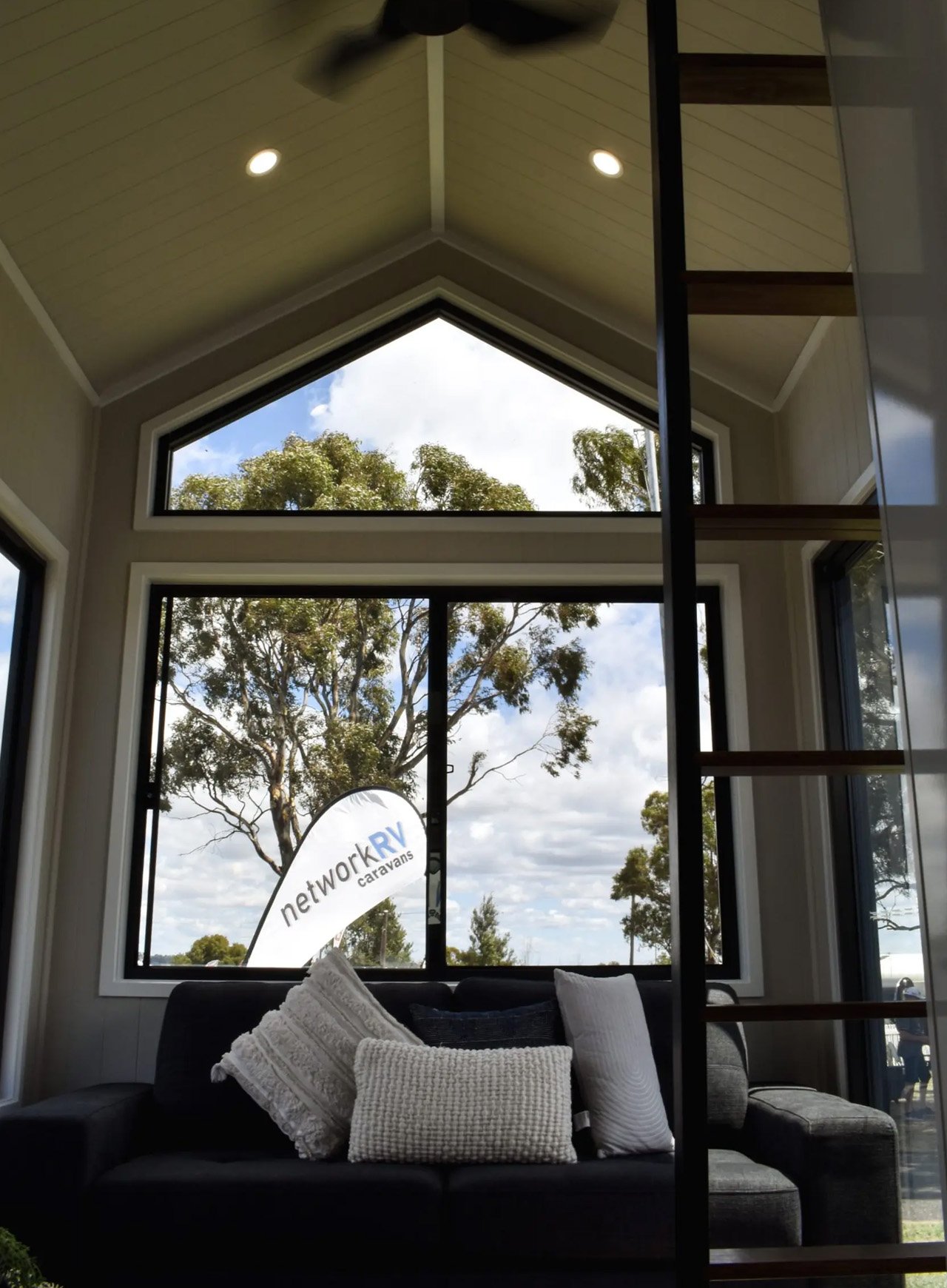

Tiny Build brings Australian efficiency to the budget market with the 4800L Compact. This 16-foot home sits on a two-axle trailer with vinyl siding and a gable roof. With a width of 2.4 meters and a height of 4.3 meters, it is easy to tow with standard vehicles. The layout makes intelligent use of the limited space.
As you enter you are greeted by a living room with a sofa bed and lots of windows that make the room seem larger. The kitchen has space for a two-burner propane stove, sink, microwave, cabinets and space for a refrigerator. At $31,000, it's the cheapest option on this list. The design is straightforward and practical, perfect as a weekend retreat or guest house.
What we like
- Unbeatable price of $31,000.
- Large windows visually expand the small interior space.
What we don't like
- A simple vinyl exterior isn't going to win any design awards.
- With a propane stove you have to deal with fuel tanks and refills.
4. The Sora by Dragon Tiny Homes – $39,500
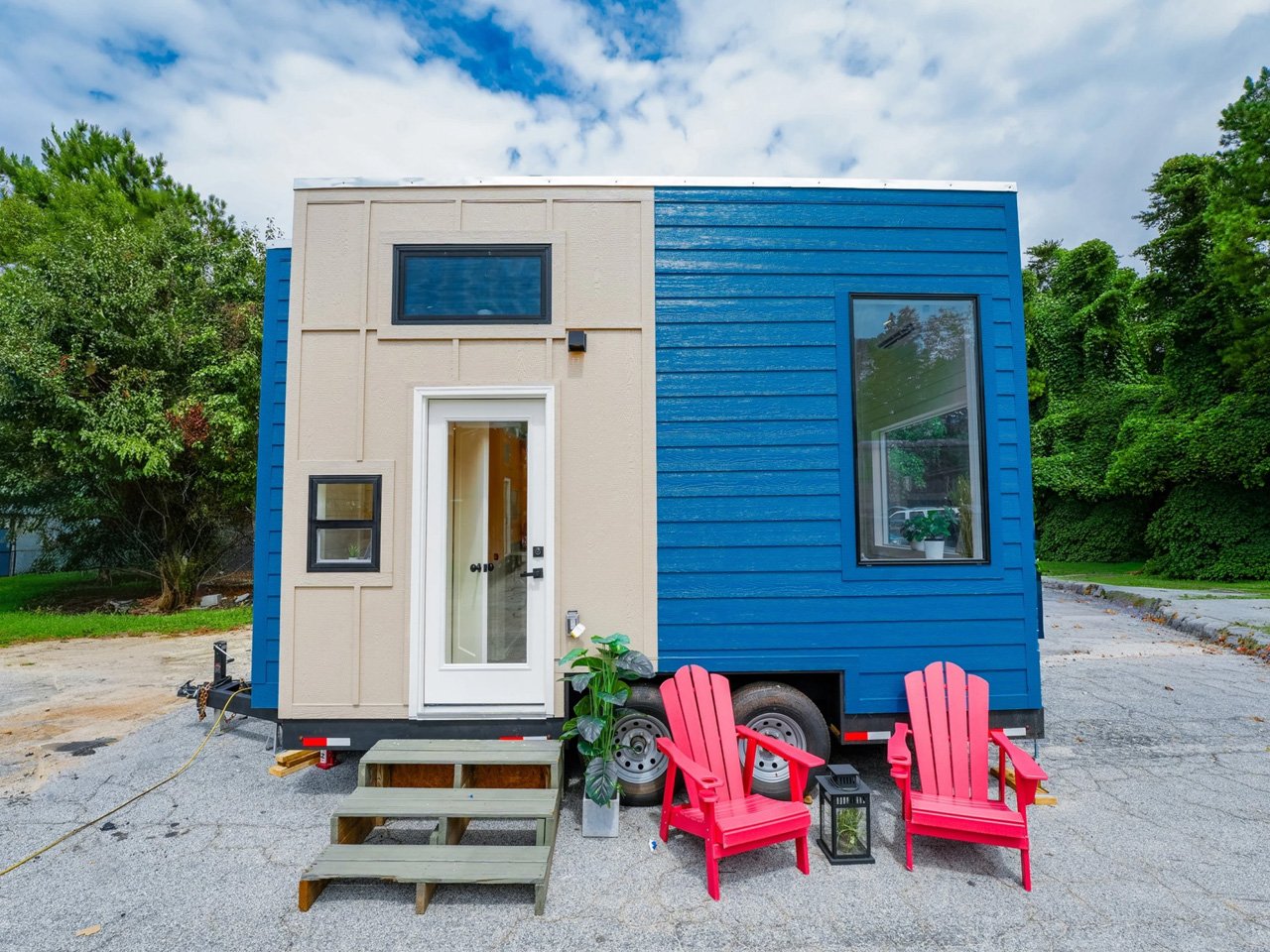

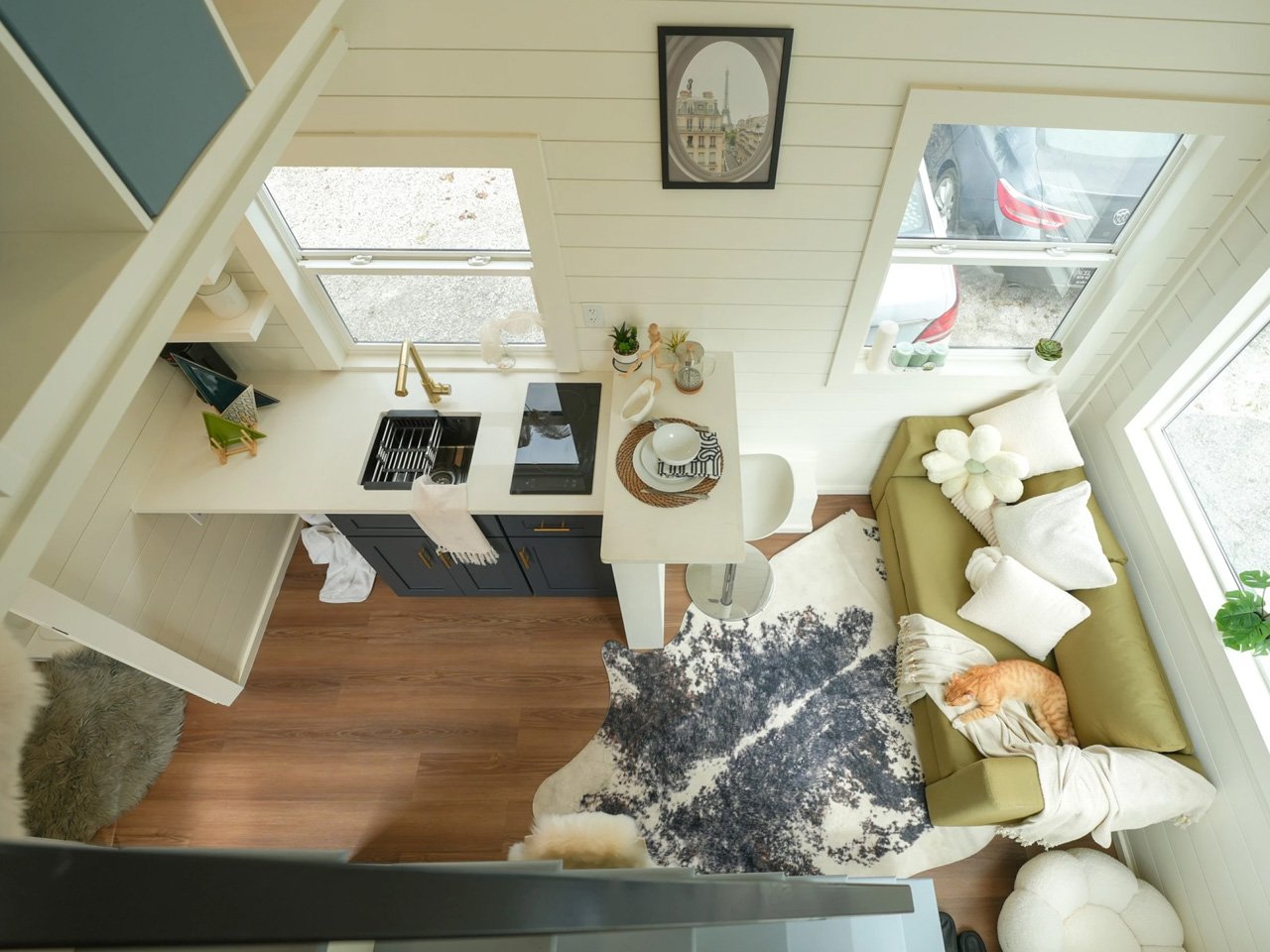

Dragon Tiny Homes has packed a lot of functionality into the 16-foot, 135-square-foot Sora. The glass entrance door opens to a full kitchen with a large fridge/freezer, induction hob and sink. There is an integrated breakfast bar that seats two people and doubles as additional storage space. It's the kind of multi-purpose thinking that makes life on a small scale actually work.
The floor plan creates clear zones for living, working and sleeping without feeling cramped. Every design decision focuses on both function and flow. You can manage your everyday life comfortably. The Sora proves that ultra-compact living works when you focus on doing the essentials exceptionally well, rather than stuffing yourself with semi-functional features.
What we like
- A full-size refrigerator/freezer is rare in 16-foot homes.
- An induction cooktop means no problems with propane and more safety.
What we don't like
- 135 square meters requires serious minimalist commitment.
- Limited storage space means you have to manage your stuff ruthlessly.
5. The Genesis by Dragon Tiny Homes – $39,500
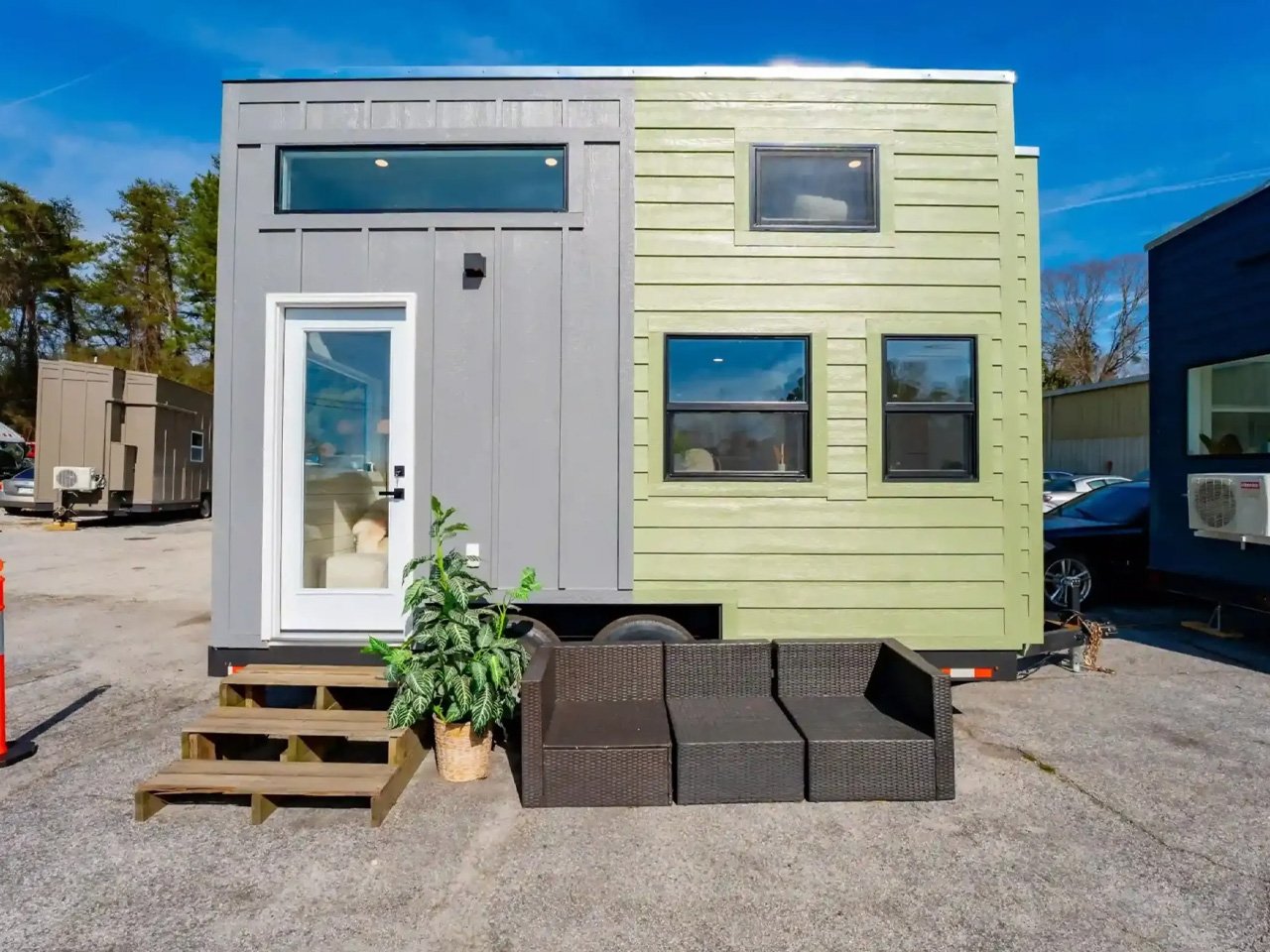

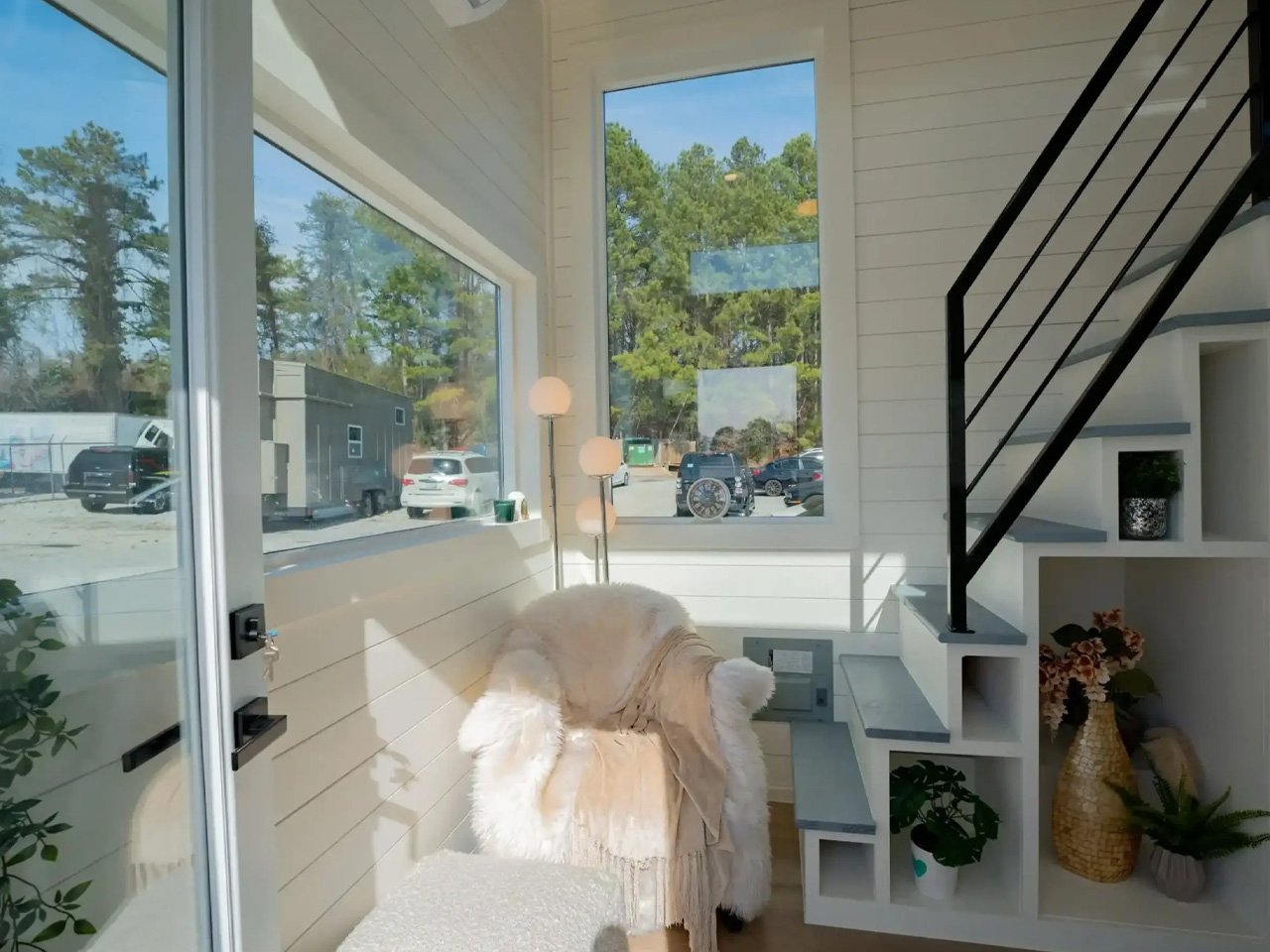

Dragon designed the Genesis to bring small living back to its affordable roots. Built on a 16-foot trailer with an engineered wood exterior, it emphasizes simplicity over fancy features. A standard RV connection provides power without complicated electrical systems. At $39,500, it's one of the most affordable complete tiny homes on the market.
The entrance leads to a modest living area with simple seating. A few steps away is the compact kitchen with an electric hob, sink, refrigerator and minimal storage space. The Genesis doesn't pretend to be luxurious. It is an uncomplicated apartment that covers basic daily needs without excess. For first-time tiny house buyers or anyone looking to live a debt-free life, it's an honest choice.
What we like
- Priced at under $40,000, it is truly affordable.
- The 16-foot length is perfect for frequent travelers.
What we don't like
- Minimal features compared to larger models.
- Basic finishes may need to be customized to ensure long-term comfort.
6. The Element by Dragon Tiny Homes – $23,500
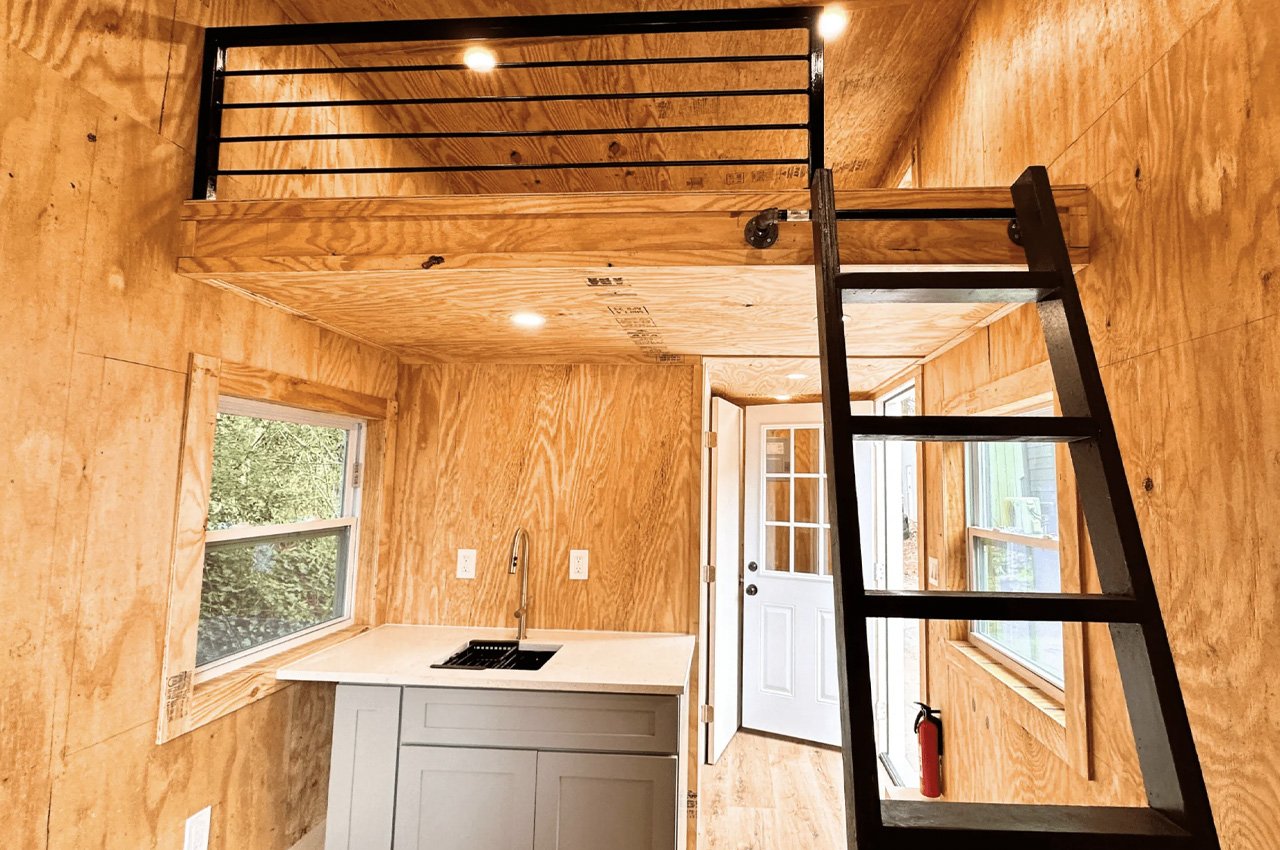

At just $23,500, the Element is the most affordable tiny home you'll find. Built on a 16-foot trailer with wood paneling, it weighs about 7,000 pounds. This means easy towing with most standard trucks. The compact footprint honors the humble origins of the tiny home movement rather than chasing luxury trends.
Inside, rough plywood paneling keeps costs down while giving you a blank canvas for customization. The low price means you don't get high-end features, but all the essential features are there. This is not suitable for entertaining large groups or gourmet dining. It's for people who value financial freedom over square footage. For radical downsizers, the Element offers unbeatable value for money.
What we like
- The $23,500 price tag makes homeownership accessible to almost everyone.
- The lightweight 7,000-pound design is easily towed by standard trucks.
What we don't like
- The rough plywood interior needs to be finished to give it a finished look.
- The extremely limited space is not suitable for families.
7. The Lad from Tiny House Listings – $35,000 (estimated)
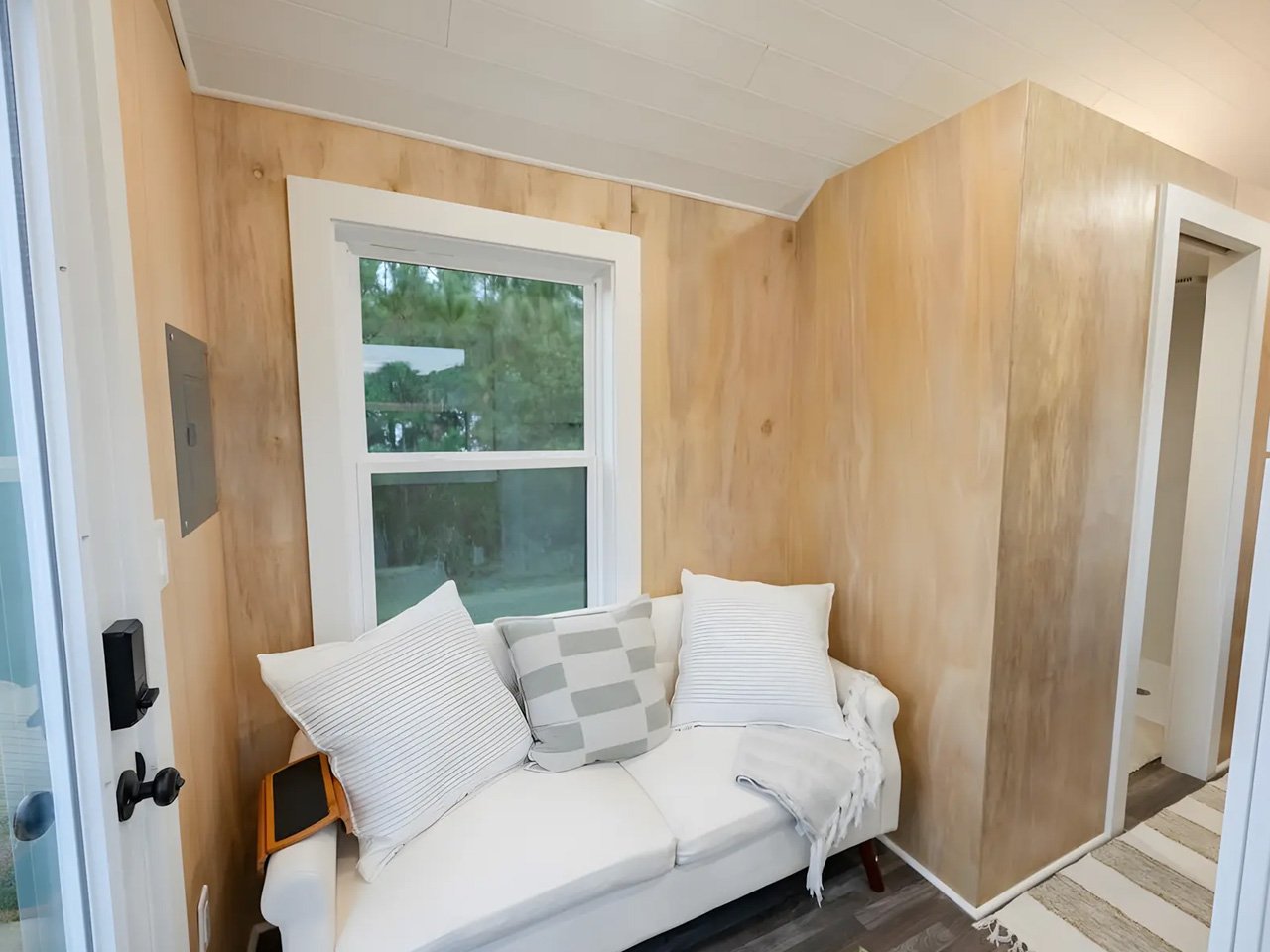

The Lad is aimed at couples who want their first home without breaking the bank. Built on a 20-foot trailer with a painted metal exterior and metal roof, it offers 160 square feet on one floor. The continuous layering provides a warm, natural feel. The entrance leads to a compact living area with space for a sofa, television and storage space.
The kitchen has everything you need: worktop, sink, electric oven, fridge/freezer and storage space. It's not a gourmet setup, but it handles everyday cooking with ease. Behind a sliding door is the bathroom with toilet, shower and sink. The boy keeps realistic expectations of what 160 square feet can do and focuses on making the essentials work well.
What we like
- The 20-foot length provides more breathing room than 16-foot models.
- The single story design is suitable for all ages without attic ladders.
What we don't like
- A simple kitchen limits serious cooking projects.
- The painted metal facade lacks the warmth of wooden designs.
The financial reality
Let's do the math. A tiny home like the $39,500 Genesis can be paid for in cash by many buyers. If you need financing, small personal loans cost far less than traditional mortgages. You could own it free and clear in three to five years. A city apartment without equity now costs $24,000 per year. Within two years, your rent payments will exceed the total cost of purchasing a tiny home. The utilities are also significantly lower. Heating and cooling 135 to 160 square feet requires minimal energy.
Many owners report monthly bills under $100 for everything. The sum insured is $300 to $600 per year. Property taxes are minimal. Total ownership costs are often less than $3,000 per year, while annual rent is $24,000 or more. These homes also create income opportunities. Set one up on your property and rent it on Airbnb for $75 to $150 per night. Use it in your yard for a long-term rental paying $500 to $800 per month. Live in it and rent out a traditional house at the same time. Tiny homes are becoming financial instruments that build wealth rather than deplete it.
The Verdict: Tiny Homes as a Financial Strategy
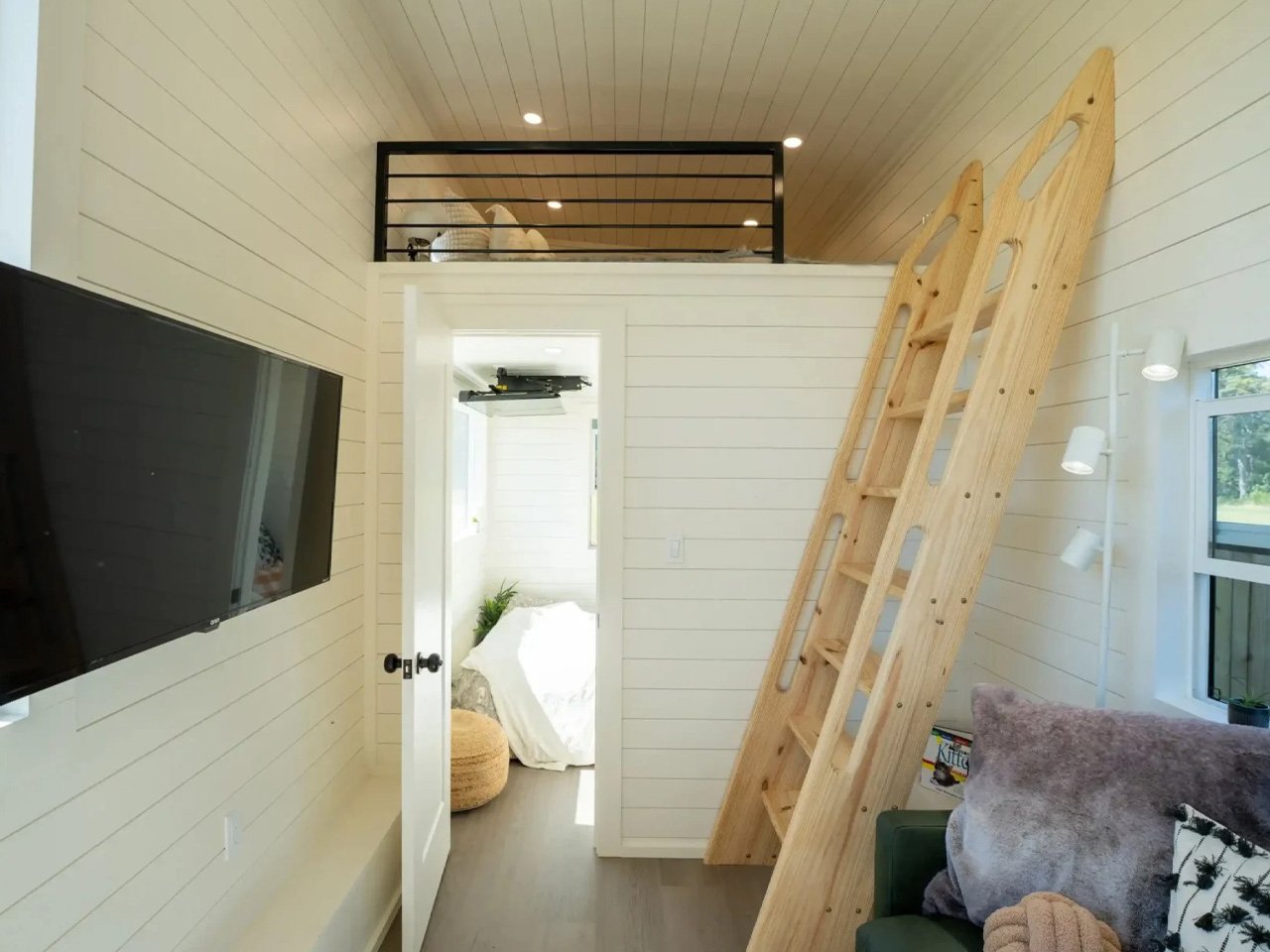

These seven homes prove that affordable housing still exists if you're willing to rethink the space. None offer a huge amount of space or luxurious amenities. What they offer is freedom from debt, the ability to pursue opportunities wherever you are, and monthly expenses that leave room for savings. From the $23,500 Element to the $45,000 Nook, each represents a different path to the same goal: comfortable living without the crushing financial burden.
The tiny home movement is no longer experimental. These are proven designs from established builders using high quality materials and intelligent floor plans. They are funded, insured and increasingly welcomed by communities. Most importantly, they are affordable in a way that traditional housing simply isn't, and they provide complete home ownership for less than many people spend on a single year of rent.
